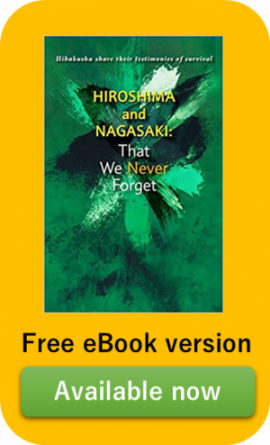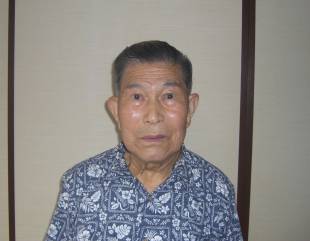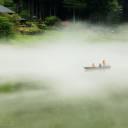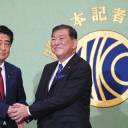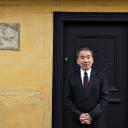There is a way to protect ourselves from nuclear weapons.
And that is to listen. Really listen.
Listen to the voices of the people who experienced their aftermath.
We will never muster the political will necessary to rid the world of nuclear weapons unless we understand what these ultimate instruments of violence really are.
A recently published book, “Hiroshima and Nagasaki: That We Never Forget,” brings together the voices and stories of more than 50 men and women who lived through the bombings of Hiroshima and Nagasaki in August 1945. So many personal stories - different perspectives on the same terrible event - create a real, complex and human picture.
These people, known as hibakusha, are the ones who survived. The fate of those who were even closer to the hypocenters was much worse.
To mark Sept. 26 - the United Nations International Day for the Total Elimination of Nuclear Weapons - this book has now been made available free of charge in eBook form.
Unbearable suffering
So, what is the real human impact described on these pages?
First are the intolerable levels of pain and suffering. The extreme heat obliterated people, melted eyeballs and caused skin to peel off, leaving suppurating burns that took months or years to heal. Masaki Morimoto, who experienced the bombing of Nagasaki when he was 12, recalled: “Maggots crawling around my wounds and bees coming to drink my pus - I was a living corpse. I was completely miserable.”
Extreme levels of radiation led to new depths of suffering. Senji Kawai, 15 when the bomb destroyed Hiroshima, stated: “I would run my fingers through my hair, and it would come out in clumps. … My gums turned purple and started to rot. They bled easily, and pus would ooze out. When I brushed my teeth, pieces of jelly-like flesh would get caught in my toothbrush.”
Almost all medical facilities had also been destroyed. People resorted to herbal remedies, simple antiseptic or even quack remedies such as ground human bone.
The people whose accounts are collected in this book all experienced the bombings as children or teenagers. Not only did they suffer physically, but they also missed the opportunity for education and often struggled in low-level jobs to make ends meet. They also suffered from persistent discrimination.
Senji Kawai concluded: “I still hate the war for making me like this. … I can’t ignore my feelings because that bomb ruined my life. I have suffered continually from it all my life.”
These depictions also include the mundane, a woman whose life was saved because she carried on peeling a potato and didn’t rush outside to look at the planes, and another who had just returned home to sew on a button.
Fear that never ends
Masaichi Egawa, Korean name Lee Jong-gun, was 17 when he experienced the Hiroshima bombing. He described how the human mind reacts during a tragedy of this unfathomable proportion: “The whole world was in darkness. … As my sight gradually returned, I doubted my eyes. Whole buildings had completely disappeared. The scene was unbelievable. My next action was to look for my lunch box. When something beyond comprehension happens, human beings turn their attention to something ordinary.”
He, like many, described terrible regrets over failing to rescue someone trapped under a collapsed building as fire was spreading. “I just kept going, pretending I didn’t hear her. Every time I recall this, I get angry at myself. … This is an emotional conflict that will never be gone from my mind.”
Emiko Okada related how sunsets still trigger her memories of the red skies over Hiroshima as the city burned fiercely for three days and nights.
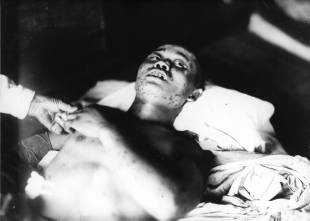
Common to all hibakusha is the fear and anxiety felt throughout their lives regarding the impact of radiation. Reviewing “Hiroshima and Nagasaki: That We Never Forget,” Masao Tomonaga, director emeritus of the Japanese Red Cross Nagasaki Atomic Bomb Hospital, commented: “The anxiety they still feel regarding potential aftereffects emerging in their own bodies or genetic effects in their offspring is quite beyond imagination. … An instantaneous exposure in August 1945 has kept survivors imprisoned by aftereffects for 70 years.”
Due to the stigma of being a hibakusha, many people hid the truth, not even telling their spouse that they had experienced the bombing. For women especially, this led to unbearable anxiety as the birth of a child neared, for fear of radiation-related disabilities.
An end to nuclear bombs
Every account concludes with the absolute determination to ensure that such hell is never experienced again. Shigeru Nonoyama puts it most succinctly. “Human beings do not need atomic bombs.”
We have banned landmines, cluster bombs and chemical weapons. Yet terrifying arsenals of nuclear weapons continue to exist, with nearly 2,000 on hair-trigger alert, the weapon of choice of the world’s most powerful nations.
We must not flinch from the reality of human suffering. If we do, we may slip closer to repeating it, believing that these bombs are “just another weapon.” We must recognize that today’s nuclear weapons are hugely more destructive than those dropped on Hiroshima and Nagasaki.
The voices of the survivors have grown increasingly important in the quest to ban nuclear weapons, even as they age and become fewer in number. During the negotiations toward the adoption of the U.N. treaty on the prohibition of nuclear weapons last July, the voices of hibakusha such as Setsuko Thurlow were vital in the campaign that was spearheaded by 2017 Nobel Peace prize winners, the International Campaign to Abolish Nuclear Weapons (ICAN).
Overwhelmed with emotion, Setsuko Thurlow, now 86, welcomed the formal adoption of the treaty. She asked delegates to pause to honor those who perished in 1945 or died later from radiation-related illnesses. “Each person who died had a name. Each person was loved by someone,” she told the crowded conference room. “I’ve been waiting for this day for seven decades, and I am overjoyed that it has finally arrived. This is the beginning of the end of nuclear weapons.”
The treaty will come into force once 50 states have ratified it; so far it has been signed by 60 states and ratified by 14. Its preamble specifically references the suffering of the hibakusha. Now, more than ever, we must listen to their heartfelt plea for a world free from nuclear weapons.
Note: “Hiroshima and Nagasaki: That We Never Forget” is available as a free eBook for education or awareness-raising purposes on the People’s Decade for Nuclear Abolition II website. The accounts were gathered by members of the Soka Gakkai peace committees. They were then compiled for this English version by the organization’s youth, to share the desire of the hibakusha for peace with young people around the world. Soka Gakkai has been promoting the abolition of nuclear weapons for over 60 years, since the Declaration Calling for the Abolition of Nuclear Weapons made by its second president Josei Toda on Sept. 8, 1957. Soka Gakkai International (SGI) has been an international partner of ICAN since 2007.
A paperback version is also available on Amazon.co.jp

